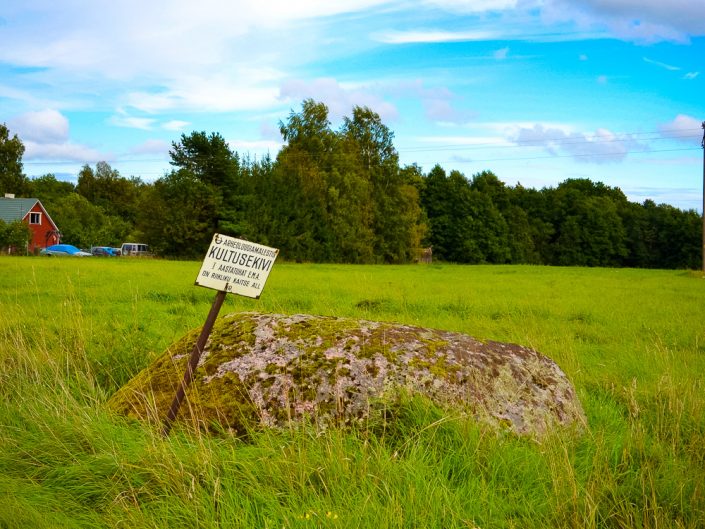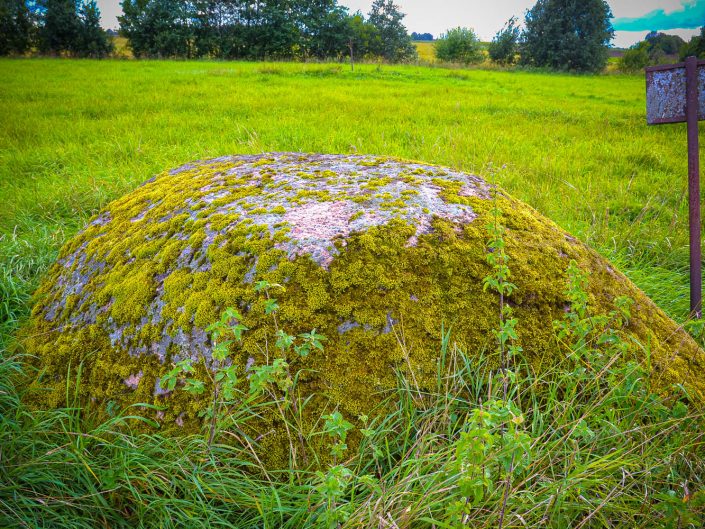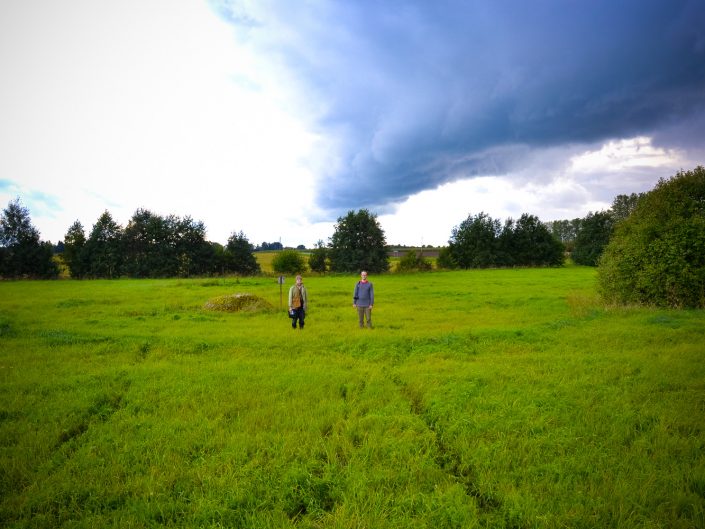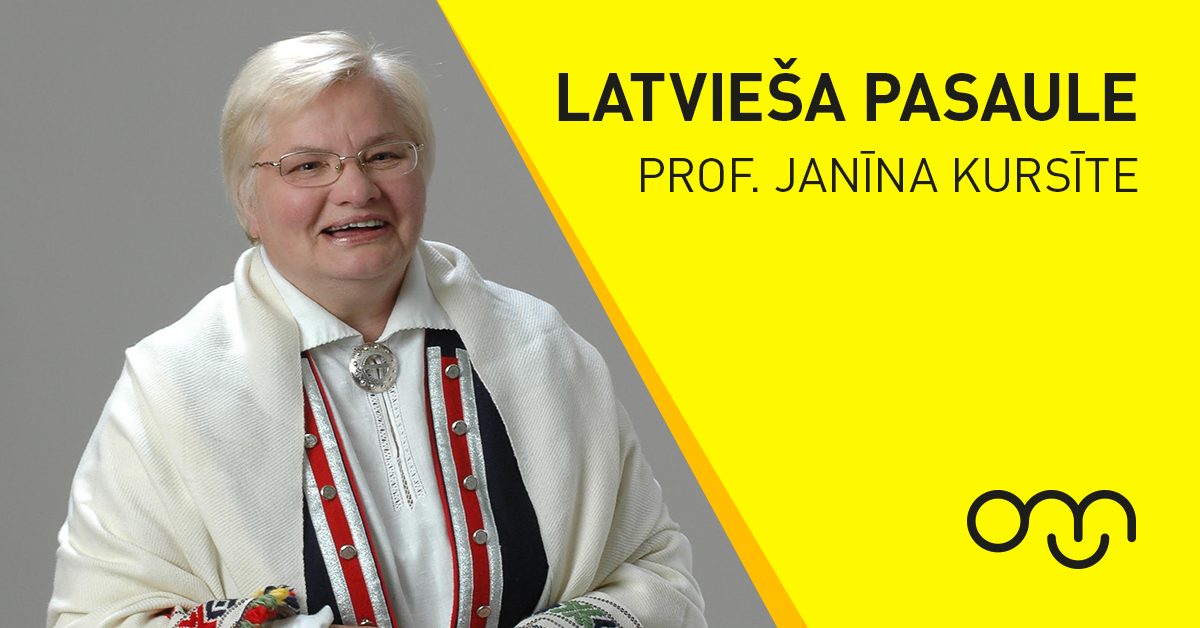Second (starting from the right) of the four cup-marked stones. Pink, with grey spots. Length 3,25 m, width 2,8 m, height 0,5 m. Trapeze shaped, flat-topped. Two boreholes (distance from each other: 7 cm) in the middle of the stone. 4 cup-marks (diameter 5-7 cm, depth 1-1,5 cm) to the South and South-West of them.
Cup-marked stones have borne witness to the history of domesticated agriculture and settlement in Estonia. Approximately 1,750 cup-marked stones have been found in Estonia and they are mainly located in three counties in northern Estonia: Lääne-Viru, Ida-Viru and Harju. Historical Juuru parish in Harju County is particularly rich in cup-marked stones, with 30 cup-marked stones featured in this list. Cup-marked stones have small cup-marks with a diameter of 3-10 cm and a depth of 0.5-5 cm. A cup-marked stone usually has from 1-10 cup-marks. Nõiakivi (Witch’s stone) in Assaku near Tallinn has the most, with 405 cup-marks. Boulders of all sizes and appearances can be cup-marked stones. The smallest cup-marked stone found thus far could almost fit into a pocket. As a rule, the cup-marks have been carved on to the surface of the stone, and in some cases, on its side. No folklore is generally associated with cup-marked stones and they have been found solely according to their external characteristics, the cup-marks. No archaeological finds were made around cup-marked stones that could be associated with the making of the cup-marks or the use of the cup-marked stones. Scholars associate the making of the cup-marks on the stones with slash and burn agriculture and settlement in the late Iron Age. The cup-marks were probably made 2,000-3,000 years ago. The greatest share of the cup-marked stones is currently located on land under cultivation. The cup-marks could have a religious function, or some practical purpose unknown to us. The suppositions that the cup-marks are related to folk astronomy, a sun cult, honouring ancestors or sacrifices have not yet been proved. The development of research into the cup-marked stones is reflected by the changes in name for the phenomenon over the last century: In the early 20th century they were called ohvrikivid (sacrificial stones), during the Soviet period they were called cult stones, and from the late 20th century they were known as cup-marked stones. A few of the cup-marked stones were used for sacrifices as well. According to a few traditional sources, the cup-marks were made to remember the dead. The cup-marks were also rubbed with sheep’s wool and lanolin for good luck with sheep farming.






